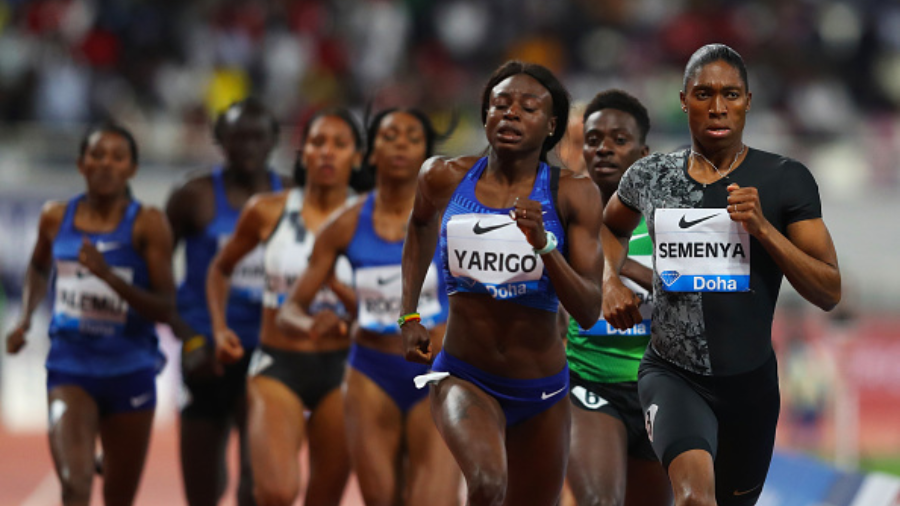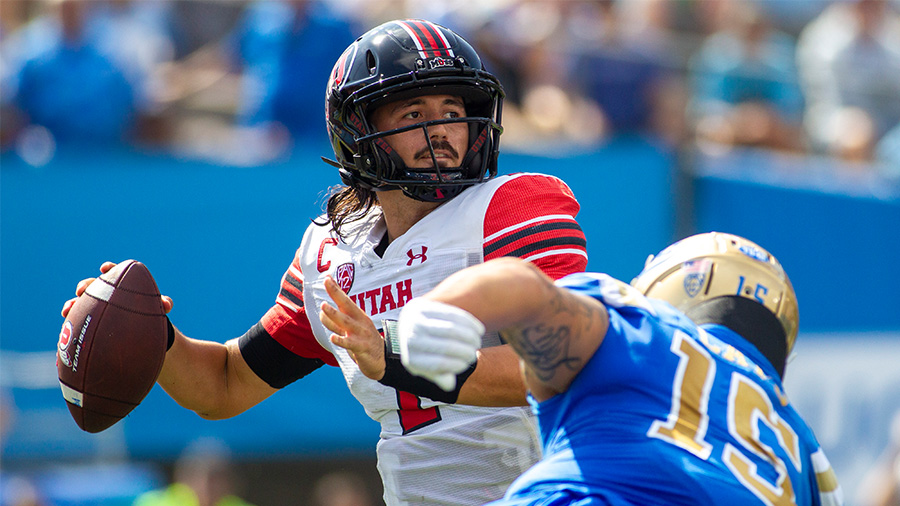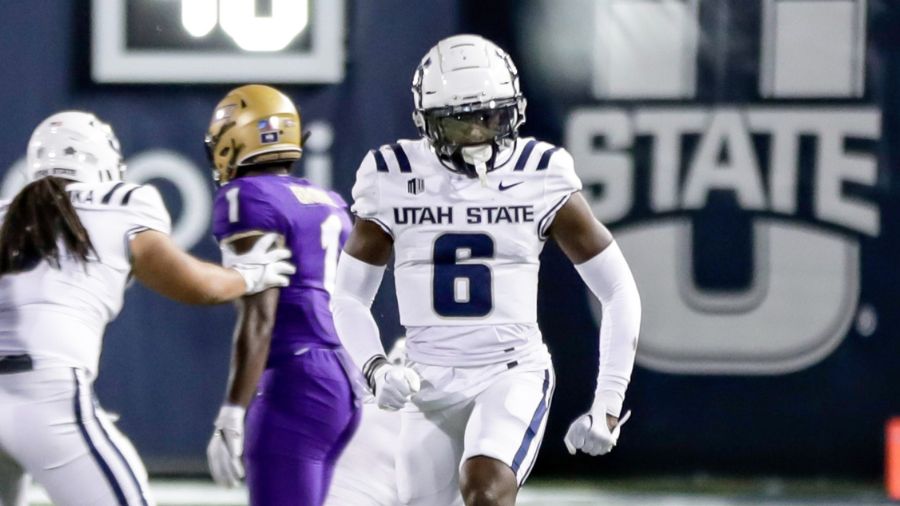Caster Semenya Is Back, So Is Her Sport’s Thorniest Problem
Jul 19, 2022, 2:36 PM

DOHA, QATAR - MAY 03: Caster Semenya of South Africa leads the pack ahead of Noele Yarigo of Benin in the Women's 800 metres during the IAAF Diamond League event at the Khalifa International Stadium on May 03, 2019 in Doha, Qatar.
CAPE TOWN, South Africa (AP) — Champion runner Caster Semenya heads into this year’s world championships with virtually no chance to win.
On Wednesday in Eugene, Oregon, the 31-year-old, three-time world champion at 800 meters will run instead in the 5,000-meter race. She is not considered a serious medal contender. It’s the first time since she started dominating her favorite distance well over a decade ago that anybody has said that.
The South African chose to run in a race she doesn’t really want to be in, and one she’s not so good at, because she has declined to submit to rules in track and field that demand she take hormone-reducing treatments if she wants to enter the 800.
CAPE TOWN, South Africa (AP) — Champion runner Caster Semenya heads into this year's world championships with virtually no chance to win. https://t.co/B8mrSqMoGZ
— The Times-Tribune (@timestribune) July 19, 2022
They are rules that Semenya, in a statement through her lawyer, calls “an affront to the spirit of the sport.”
Semenya was assigned female at birth, was raised as a girl and identifies as a woman. She has an intersex condition called 46,XY differences in sex development that causes male and female traits and a testosterone level higher than the typical female range. She was banned from her best event after losing her appeal of a World Athletics regulation that made women with her condition ineligible for some races.
She is not transgender. Still, her case, and those involving others who have similar intersex conditions, carries strong implications for how transgender athletes are treated and classified.
Semenya’s situation, and the similar plight of 200-meter Olympic silver medalist Christine Mboma, are the most relevant illustrations of how complex track’s rules are regarding the participation of women who have high natural testosterone and what some say is an unfair athletic advantage over other women.
For instance, the rules, which will be revisited soon, bar Semenya and others from running distances between 400 meters and 1 mile unless they suppress their testosterone. They are free to run in other events. So, while Mboma has been eligible to run in the 200, Semenya must sit out of the 800.
Mboma is injured this summer and did not travel to Eugene. Semenya wasn’t expected to come either, but out of nowhere, her name showed up on the start list for the longer race.
#SportsMvt | #AthleticsPhotography
🗨️ "Great rivalries are built on respect and excellence."
Dominique Scott-Efurd x Caster Semenya
Scott-Efurd won the women's 5000m title with a Season's Best time of 15:28.10 at the 2022 ASA Senior Track & Field National Champs in Cape Town. pic.twitter.com/aWItfjxmTe
— #SportsMvtInsider (@sports_mvt) July 19, 2022
The related but separate issue of transgender women in sports again burst into the spotlight last month when international leaders in swimming made their own rules change. They banned transgender women from elite competitions if they hadn’t begun medical treatment to suppress testosterone production before either the onset of puberty or by age 12, whichever comes later.
World Athletics President Sebastian Coe quickly showed his support for swimming’s move and said track’s governing body would review its rules by the end of the year, likely with a view to making them stricter.
“The balance between inclusivity and fairness will always, in my view, fall now on the side of fairness,” Coe said on the eve of these worlds, indicating where track might be going when its rule-makers meet in November.
Such a recalibration of the rules would likely only hurt, not help, Semenya’s cause.
In a rare interview she gave on HBO’s “Real Sports” earlier this year, she said she once told track officials: “It’s fine. I’m a female, I don’t care. If you want to see I’m a woman, I will show you my vagina. All right?'”
Critics of World Athletics say its recent trend of essentially lumping together the transgender and intersex issues is problematic. Coe has often used the phrase “biology trumps identity” as a catch-all defense for restrictions in both, breezing over the nuance.
Track’s two rule sets do have crossover in that both, broadly, require athletes to reduce their natural testosterone to compete.
While the DSD regulations, in place since 2019, have real-life impact on athletes and careers, transgender regulations don’t at this point because there are no transgender women in top-level track and field. Neither are there in swimming.
That’s left Roger Pielke Jr., a professor at the University of Colorado Boulder and a sports governance expert, concluding the leaders of those two key Olympic sports are in “a moral panic” over transgender athletes that just aren’t there.
“We’re just shadow boxing now,” Pielke said. “As if there’s not bigger issues sport could deal with.”
Swimming’s sweeping ban was a bad precedent, said Joanna Harper, a transgender woman and adviser to World Athletics on its transgender and DSD policies. She supports some regulations but FINA, the sport’s international governing federation, left no room for compromise.
“Did they set the world stirring? You bet they did,” Harper said. “But I don’t think it was necessary and I don’t think it was justified.”
Harper said FINA’s move was obviously influenced by American transgender swimmer Lia Thomas, who has broken barriers at the college level amid controversy and spoken of her desire to swim at the Olympics one day, putting FINA on alert. But if USA Swimming adopts FINA’s ban, thereby actually impacting an athlete, Harper said it was “very likely” Thomas would go to court.
That legal risk is relevant when trying to evaluate if a wave of sports will follow swimming’s transgender lead, and if across-the-board bans can last.
As much as the decision in swimming, a major catalyst for World Athletics’ move to revisit its rules might have been the arrival of the young Namibian sprinter, Mboma. She won a silver medal in the 200 — a distance at which she remains eligible — at last year’s Tokyo Olympics, her first major meet. The win came just months after Mboma was forced to switch from the 400 because of high natural testosterone.
The then-unknown teenager broke the world under-20 record three times in a week on the way to her silver and blew past some of the world’s best runners with the rawest of running styles. She did what Semenya has so far been unable to do by exploiting the distance loopholes in the DSD rules to win a medal. It went counter to what World Athletics was seeking when it adopted the rules.
Supporters of testosterone regulations have used Mboma’s sudden success as some level of evidence for the advantages of testosterone in races outside the 400-meter through 1-mile distances that are currently regulated.
Harper thinks there needs to be compromise by both sides over the transgender and DSD rules that leads to “a reasonable outcome that maybe makes no one entirely happy.”












